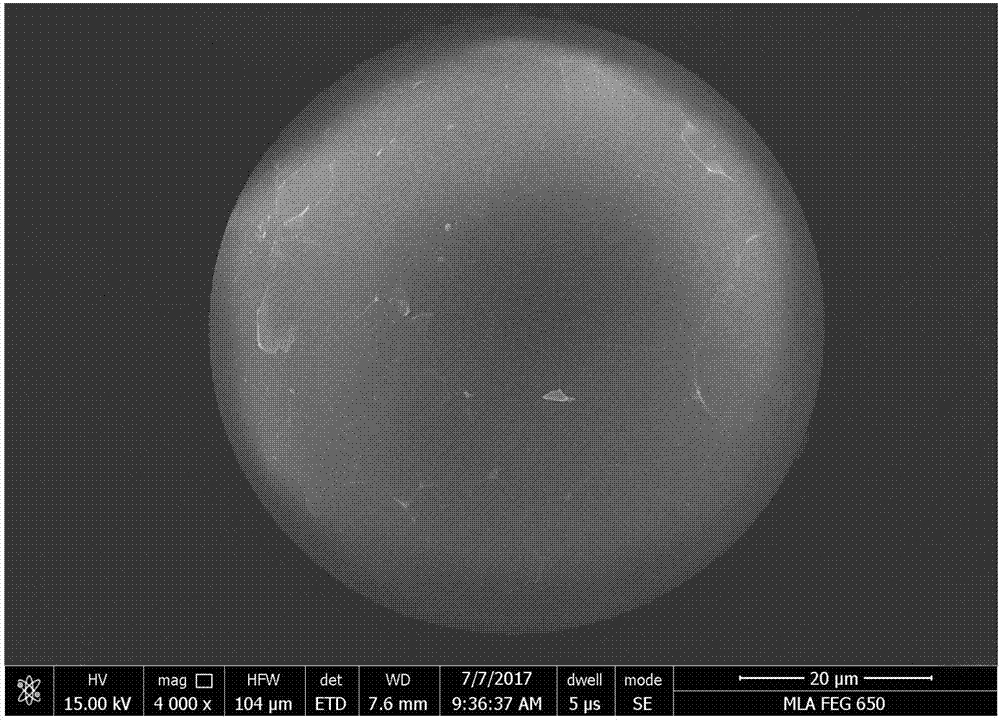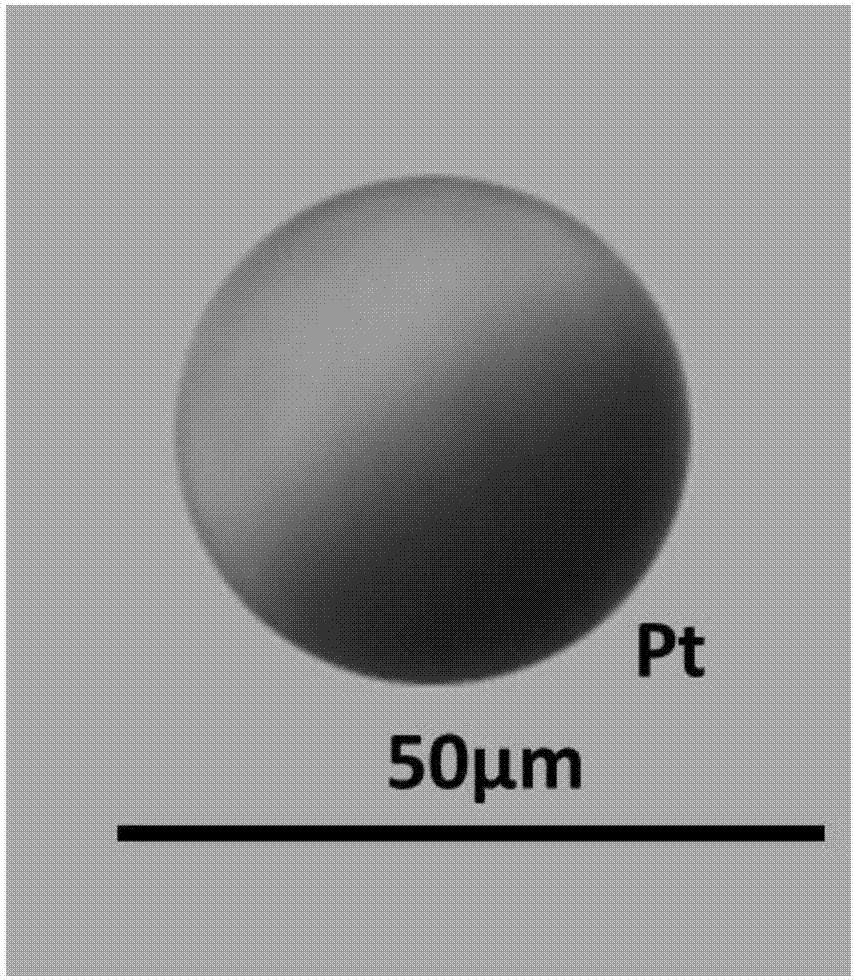Preparation method for hollow Janus particles
A hollow, granular technology, applied in the direction of vacuum evaporation plating, manufacturing microstructure devices, and the process for producing decorative surface effects, etc., can solve the problems of complex preparation process, small particle size, poor dispersion, etc., and achieve fast and simple preparation , good fluidity and low surface energy
- Summary
- Abstract
- Description
- Claims
- Application Information
AI Technical Summary
Problems solved by technology
Method used
Image
Examples
Embodiment 1
[0030] First, take 10 g of hollow glass microspheres with a nominal diameter distribution of φ15-40 μm (H60, Sinosteel Maanshan Mining Institute New Material Technology Co., Ltd.), and place them in 1 L of dilute sodium hydroxide solution with a concentration of 4% by mass. Soak for 40 minutes, then repeatedly wash with deionized water, then perform ultrasonic and centrifugal separation, and prepare a dilute solution of hollow glass microbeads (mass percentage: 1-5%). A 4-inch silicon wafer was placed in a plasma sputtering apparatus (EDT-2000), and oxygen was introduced to carry out surface hydrophilic modification to obtain a super-hydrophilic silicon wafer. Take 10ml of the dilute solution of hollow glass microspheres above and evenly drop it on the silicon wafer, put the silicon wafer on the glue homogenizer, and put it under different graded rotation speeds (class I revolution number 500r / min, 10s; class II revolution number 3000r / min, 15s) ) to spread the hollow glass mi...
Embodiment 2
[0032] The self-driving performance of the hollow Pt-Janus particles prepared in Example 1 was verified. Take an appropriate amount of hollow Pt-Janus particles and 3% H 2 o 2 The solutions were mixed to obtain a Pt-Janus particle solution. Take 40 μL of the mixed solution on a glass slide, and observe it under a Nikon inverted microscope, use a high-speed CCD to record the hollow Pt-Janus particles in dilute H 2 o 2 Self-driven trajectories in solution, such as image 3 Shown are hollow Pt-Janus particles in 3% H 2 o 2 The 1.5s trajectory in the solution. Since the hollow Pt-Janus particles are on the order of 20 microns, the driving mode is bubble-driven, and the range of motion trajectory is much larger than that of small-sized Pt-Janus particles at the same concentration of H. 2 o 2 The self-diffusion driving range in . The driving type and driving trajectory obtained in Example 2 verified the successful preparation of large-sized hollow Janus particles.
PUM
 Login to View More
Login to View More Abstract
Description
Claims
Application Information
 Login to View More
Login to View More - R&D
- Intellectual Property
- Life Sciences
- Materials
- Tech Scout
- Unparalleled Data Quality
- Higher Quality Content
- 60% Fewer Hallucinations
Browse by: Latest US Patents, China's latest patents, Technical Efficacy Thesaurus, Application Domain, Technology Topic, Popular Technical Reports.
© 2025 PatSnap. All rights reserved.Legal|Privacy policy|Modern Slavery Act Transparency Statement|Sitemap|About US| Contact US: help@patsnap.com



